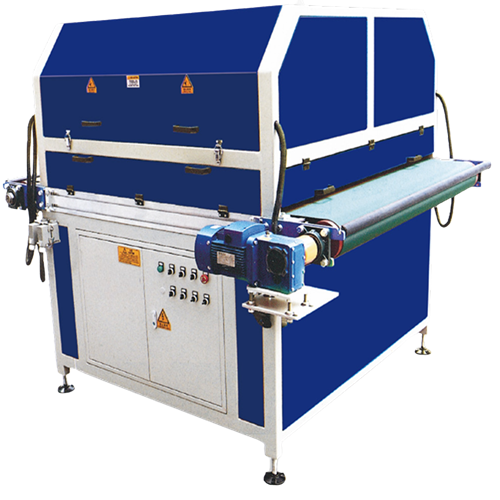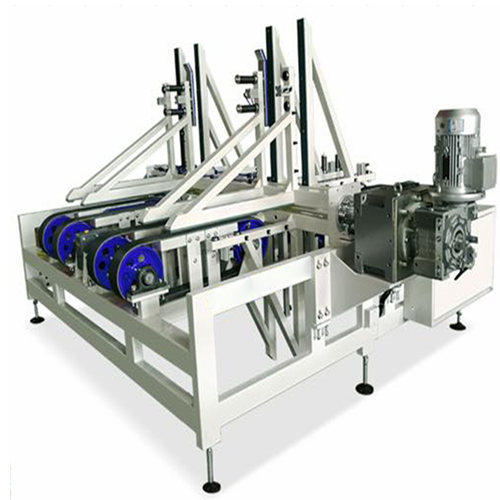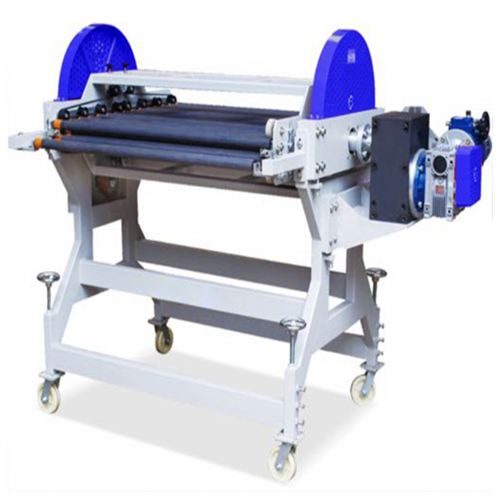Biscuit Brush Machine: Enhancing Efficiency in Ceramic Tiles Glazed Line
In the ceramic tile manufacturing industry, maintaining a clean and defect-free surface on tile substrates (commonly known as “biscuits”) is critical for achieving high-quality glaze application. To meet this challenge, Aexea International has integrated the biscuit brush machine into its glazed line processes. This specialized equipment ensures that tile biscuits are free from dust, debris, and imperfections, thereby optimizing the glazing process and improving product quality.
This comprehensive article explores the importance, design, functionality, and benefits of the biscuit brush machine, highlighting its role in Aexea International’s ceramic tile production.
What Is a Biscuit Brush Machine?
A biscuit brush machine is a specialized cleaning device used in the early stages of the ceramic tile glazing line. Its primary function is to clean the tile biscuits (unfired or partially fired ceramic tiles) before the application of glaze. The machine uses high-precision brushes and advanced cleaning mechanisms to remove surface contaminants, ensuring a smooth and defect-free surface for subsequent processes.
Importance of Biscuit Cleaning in Glazing Lines
Proper cleaning of tile biscuits is an essential step in the ceramic tile production process. The presence of dust, debris, or other surface contaminants can negatively impact the quality of the glaze application, leading to defects such as:
- Uneven Glaze Application
Surface impurities can cause the glaze to spread unevenly, resulting in blotches or streaks. - Adhesion Issues
Contaminants can reduce the adhesion of the glaze to the tile, compromising durability and aesthetic appeal. - Firing Defects
Debris left on the tile surface can lead to imperfections during the firing process, such as pinholes or blisters.
By integrating a biscuit brush machine, manufacturers can ensure that tiles enter the glazing line in pristine condition, minimizing the risk of defects and rework.
How the Biscuit Brush Machine Works
The biscuit brush machine operates through a series of coordinated steps to deliver thorough cleaning:
Tile Loading
Tiles are loaded onto the conveyor system, either manually or through automated feeding systems.Initial Inspection
Sensors check the tiles for correct positioning and alignment before they enter the cleaning stage.Brushing Process
The tiles pass under the rotating brushes, which scrub their surfaces to remove dust, debris, and loose particles.Vacuum Extraction
The vacuum system collects the dislodged debris, ensuring that the tiles remain clean as they exit the machine.Post-Cleaning Inspection
Cleaned tiles are inspected for quality before being transferred to the next stage of the production line.
Applications in Aexea International’s Glazed Line
At Aexea International, the biscuit brush machine plays a vital role in the glazed line process, contributing to various production stages:
Pre-Glazing Preparation
The machine ensures that tile biscuits are free from impurities before glaze application, enhancing the consistency and quality of the glaze layer.Intermediate Cleaning
For multi-stage production processes, the biscuit brush machine can be used between stages to remove any contaminants introduced during handling.High-Quality Products
By ensuring a pristine surface, the machine supports the production of high-end ceramic tiles with intricate designs and finishes.
Advantages of Using a Biscuit Brush Machine
The integration of a biscuit brush machine into Aexea International’s glazed line processes offers numerous benefits:
Enhanced Product Quality
The machine ensures a clean and smooth tile surface, allowing for uniform glaze application and reducing the likelihood of defects.Increased Production Efficiency
By automating the cleaning process, the machine minimizes manual labor and speeds up production, resulting in higher throughput.Reduced Waste
Proper cleaning reduces the need for rework and discarding defective tiles, contributing to cost savings and environmental sustainability.Customizability
Adjustable brushes and other parameters allow the machine to handle tiles of various sizes and thicknesses, making it versatile for different production lines.Improved Workplace Environment
The integrated vacuum system minimizes dust and debris in the production area, promoting a healthier and safer environment for workers.Energy Efficiency
Advanced sensors and automated controls optimize energy usage, reducing operational costs.
Future Trends in Biscuit Brush Machines
The future of biscuit brush machines is shaped by emerging technologies and industry trends:
AI-Driven Cleaning Systems
Artificial intelligence will enable machines to adapt dynamically to varying tile conditions, ensuring optimal cleaning performance.Sustainability Enhancements
Manufacturers will continue to develop eco-friendly machines with reduced energy consumption and lower carbon footprints.Data-Driven Insights
Real-time data analysis and reporting will provide valuable insights into machine performance, enabling continuous improvement.Global Standards Compliance
Future machines will be designed to meet international quality and safety standards, ensuring compatibility with global markets.
To summarize:
The biscuit brush machine is a cornerstone of Aexea International’s commitment to excellence in ceramic tile manufacturing. By ensuring clean and defect-free tile surfaces, the machine enhances the glazing process, reduces production costs, and supports the creation of high-quality ceramic tiles.
As technology continues to advance, biscuit brush machines will become even more efficient, sustainable, and versatile, solidifying their role as an essential component in the ceramic tile production process. Aexea International’s integration of this innovative equipment underscores its dedication to staying at the forefront of the ceramics industry, delivering superior products to meet the evolving demands of its customers.




